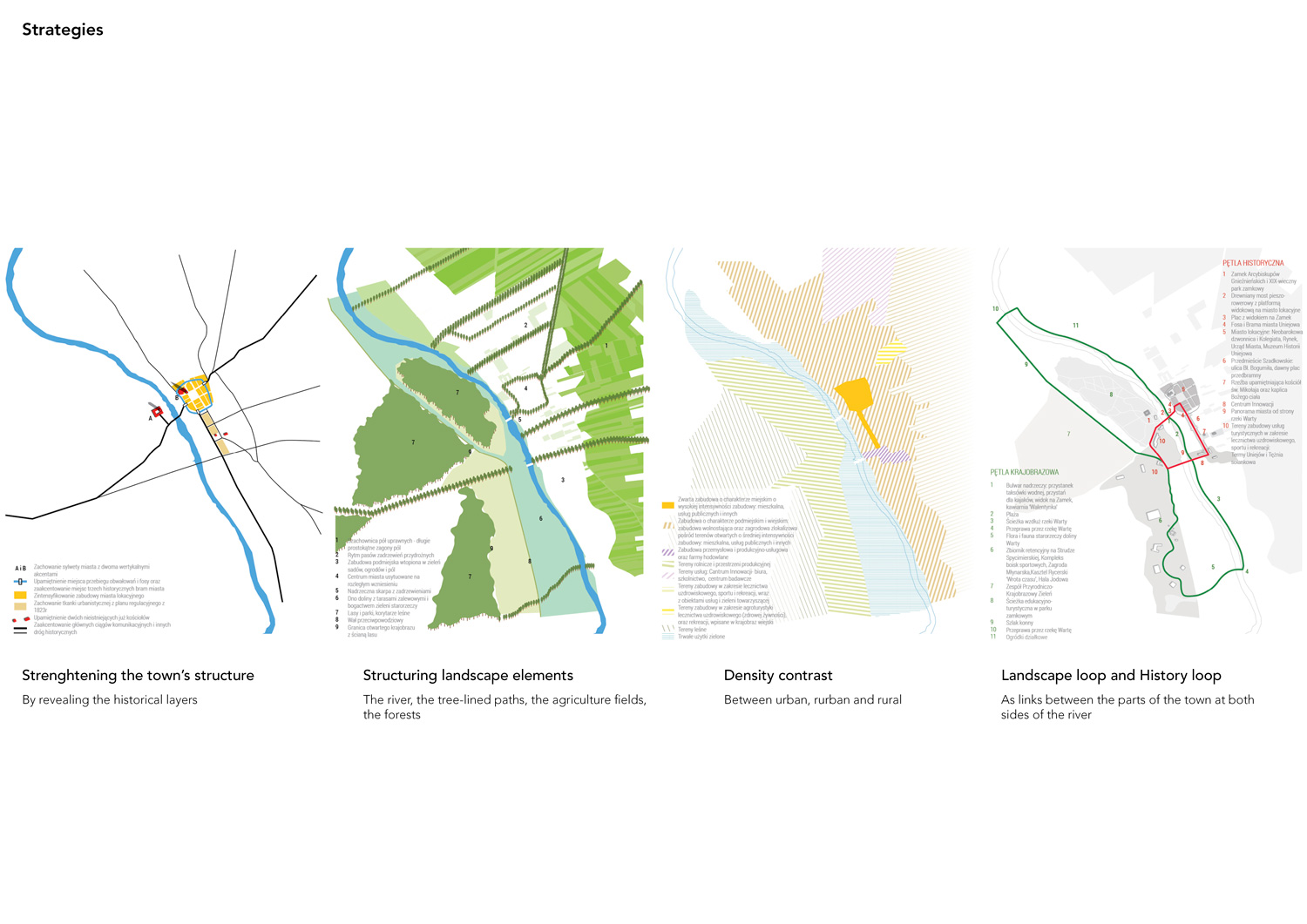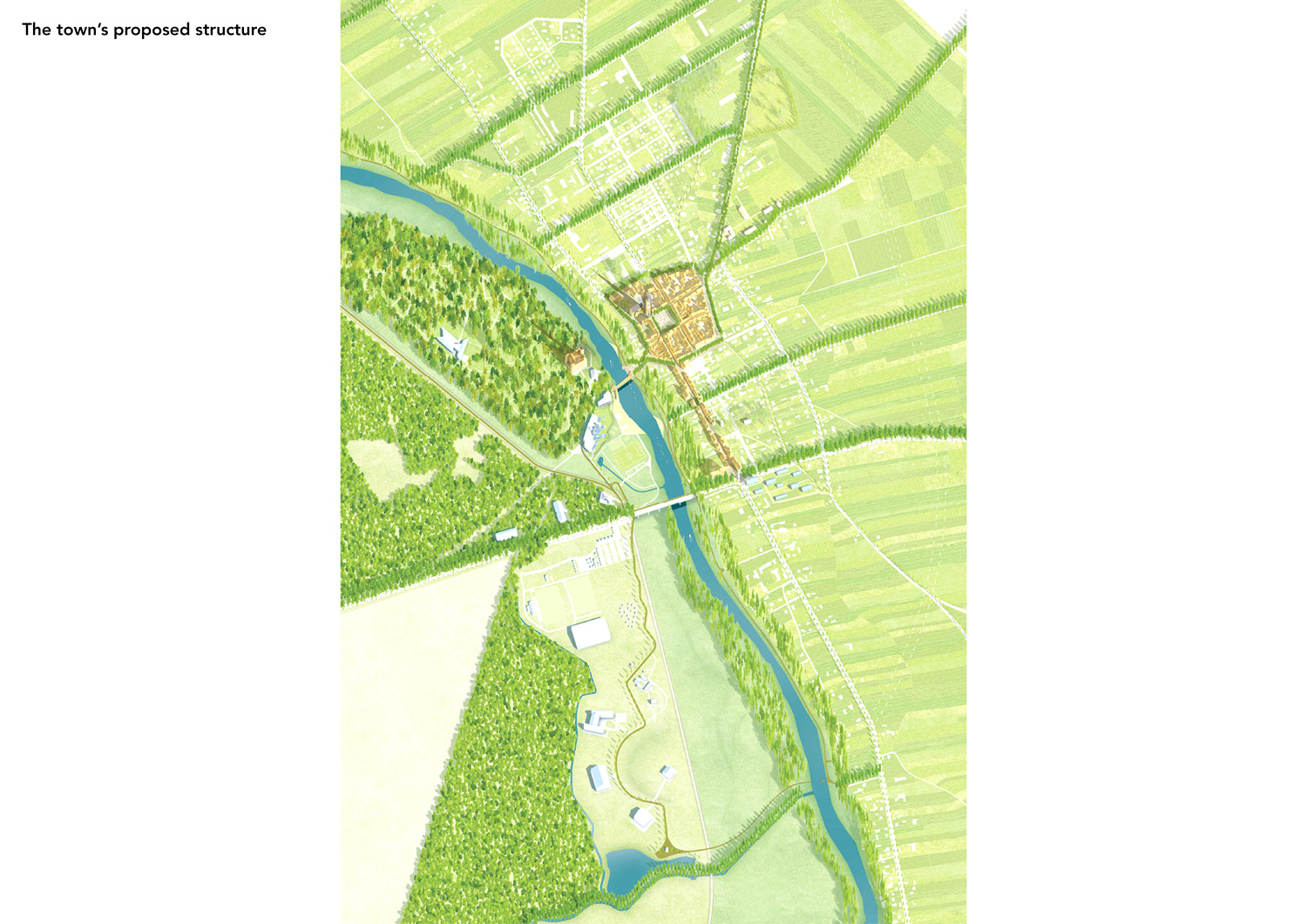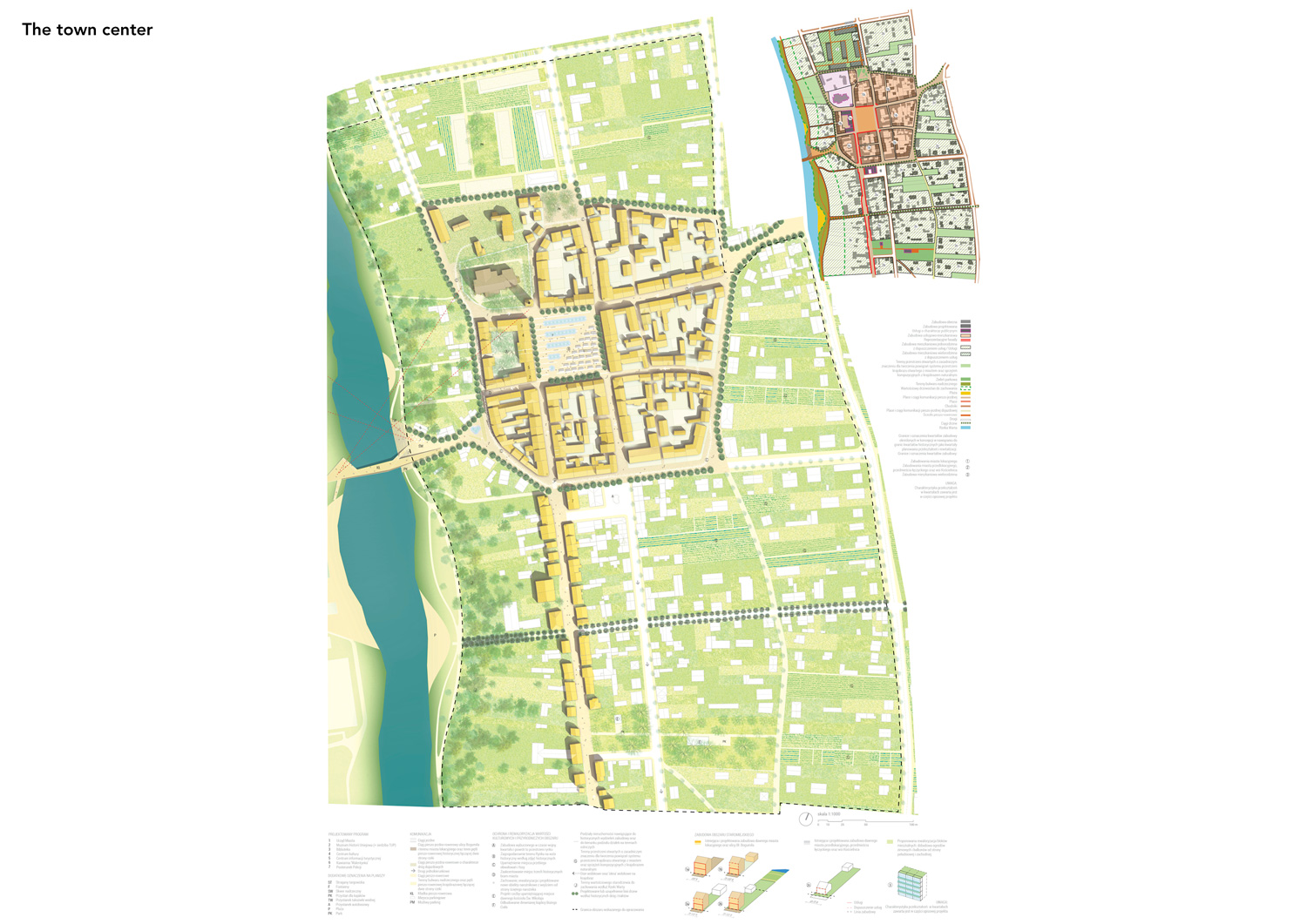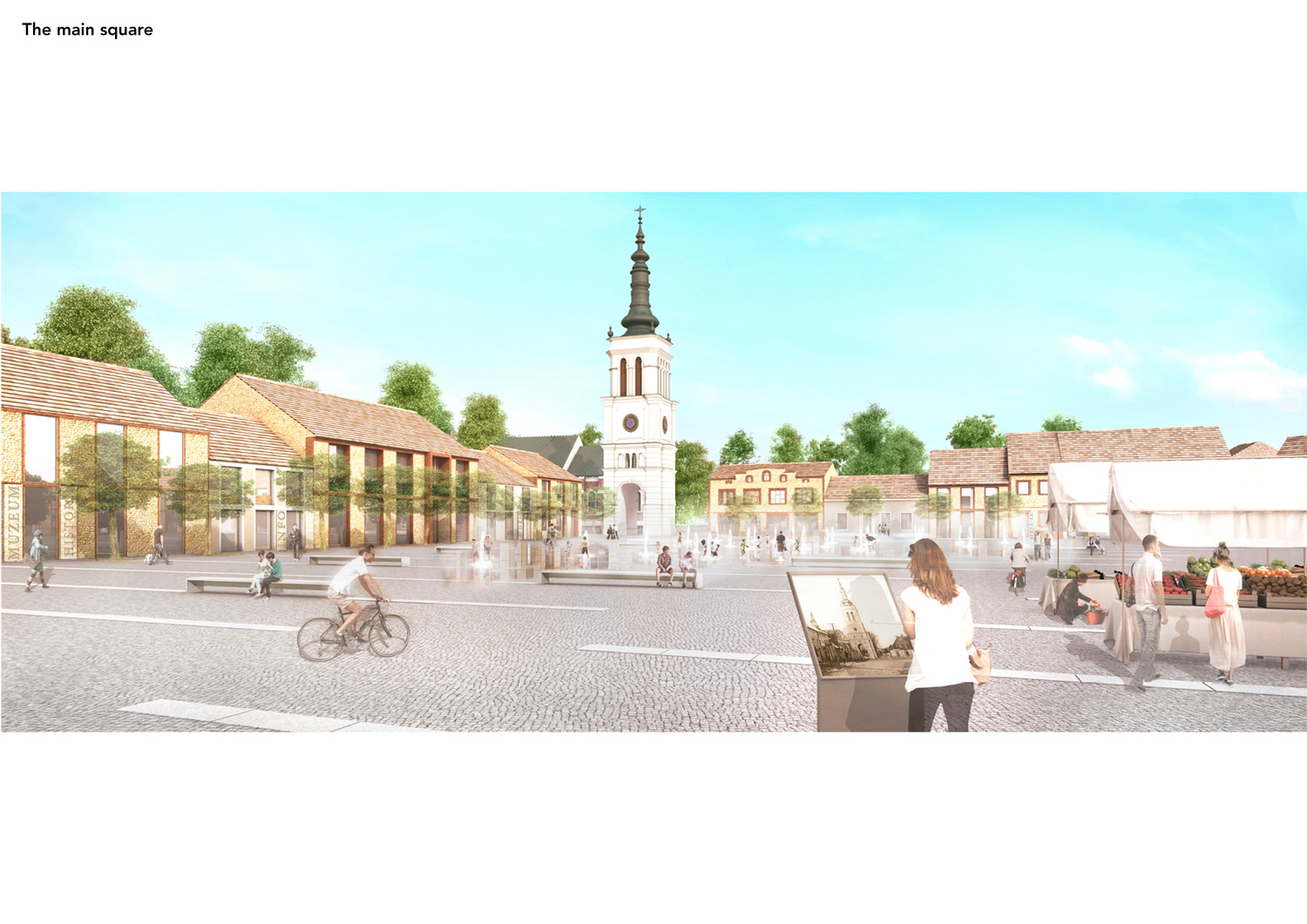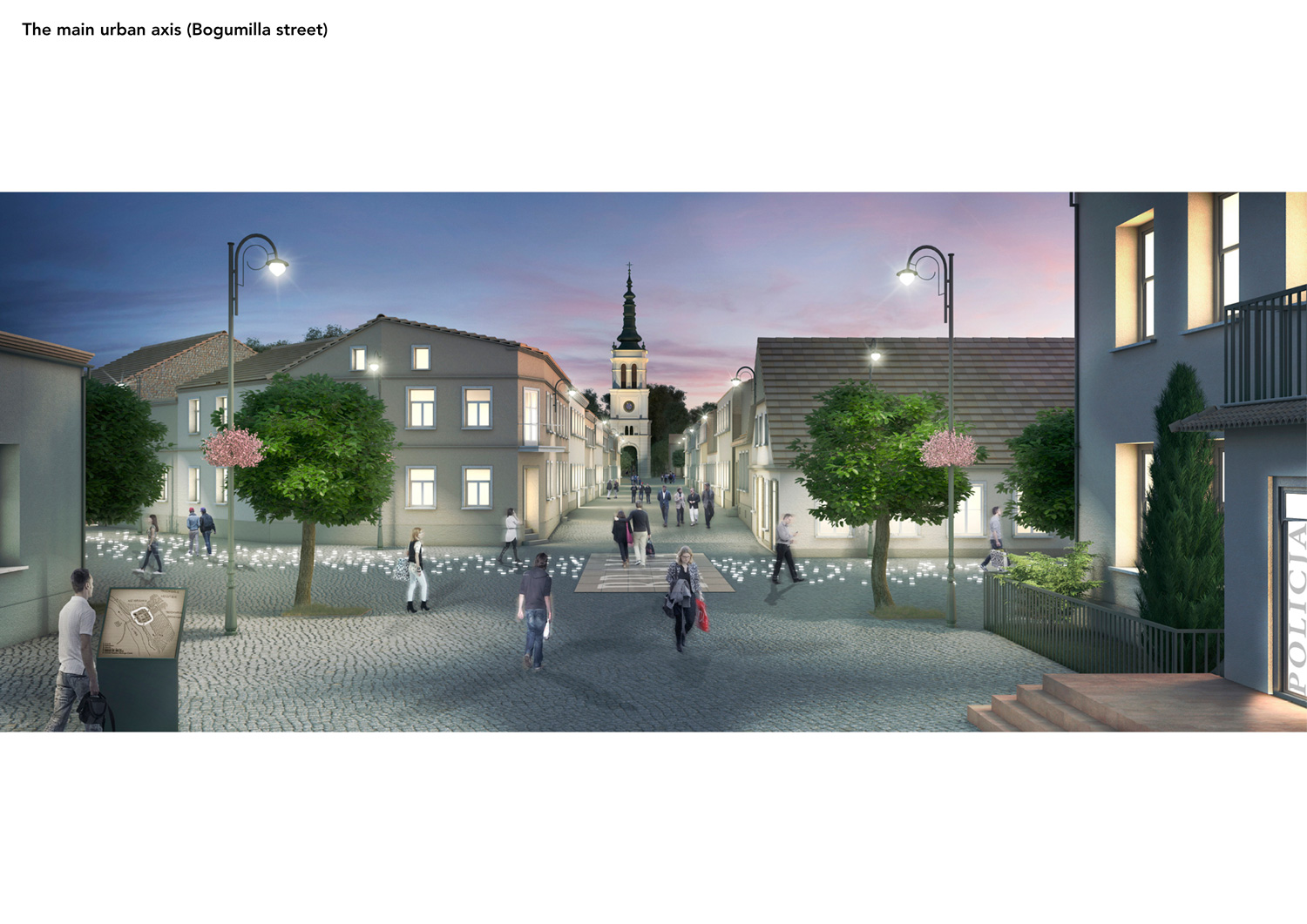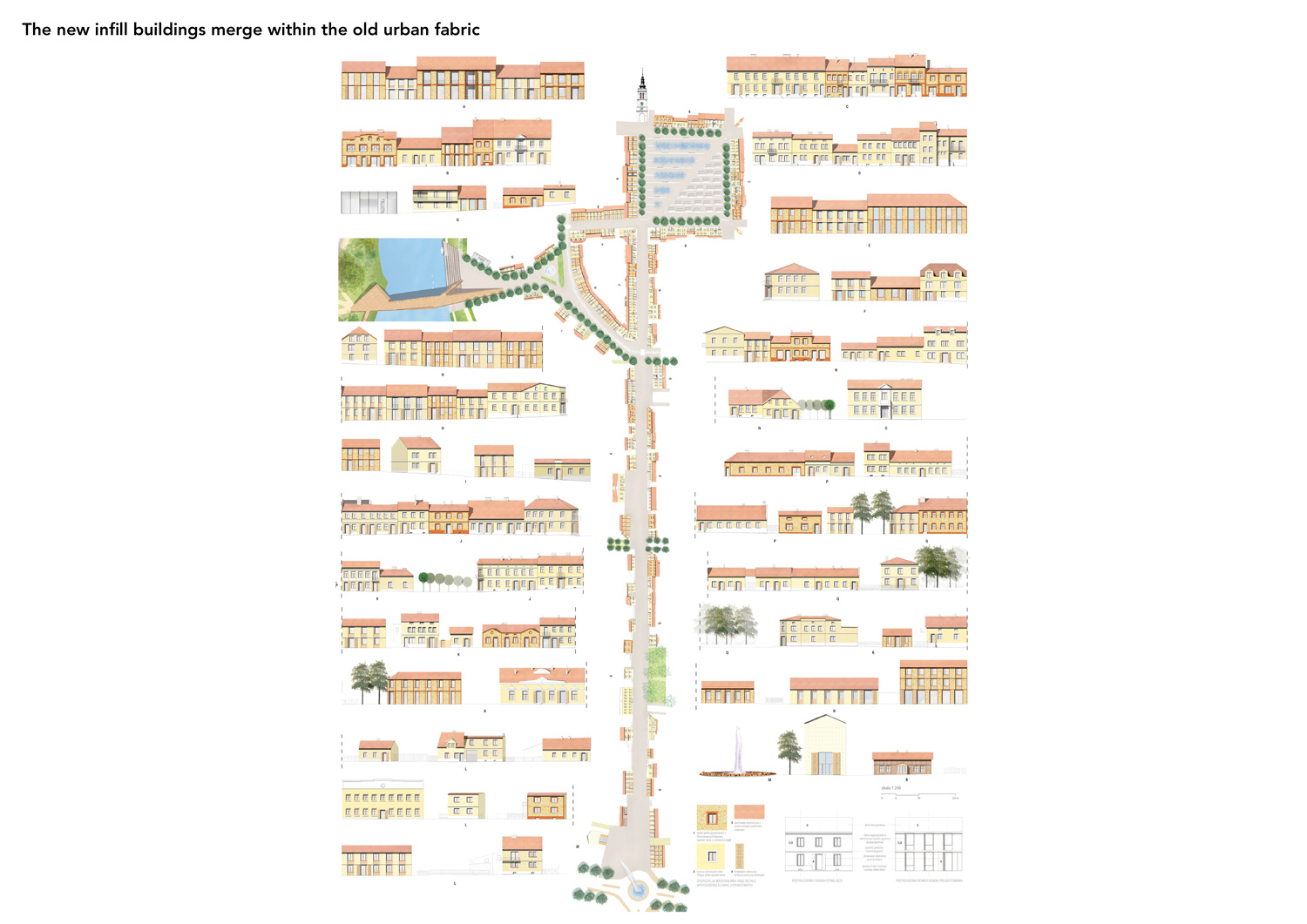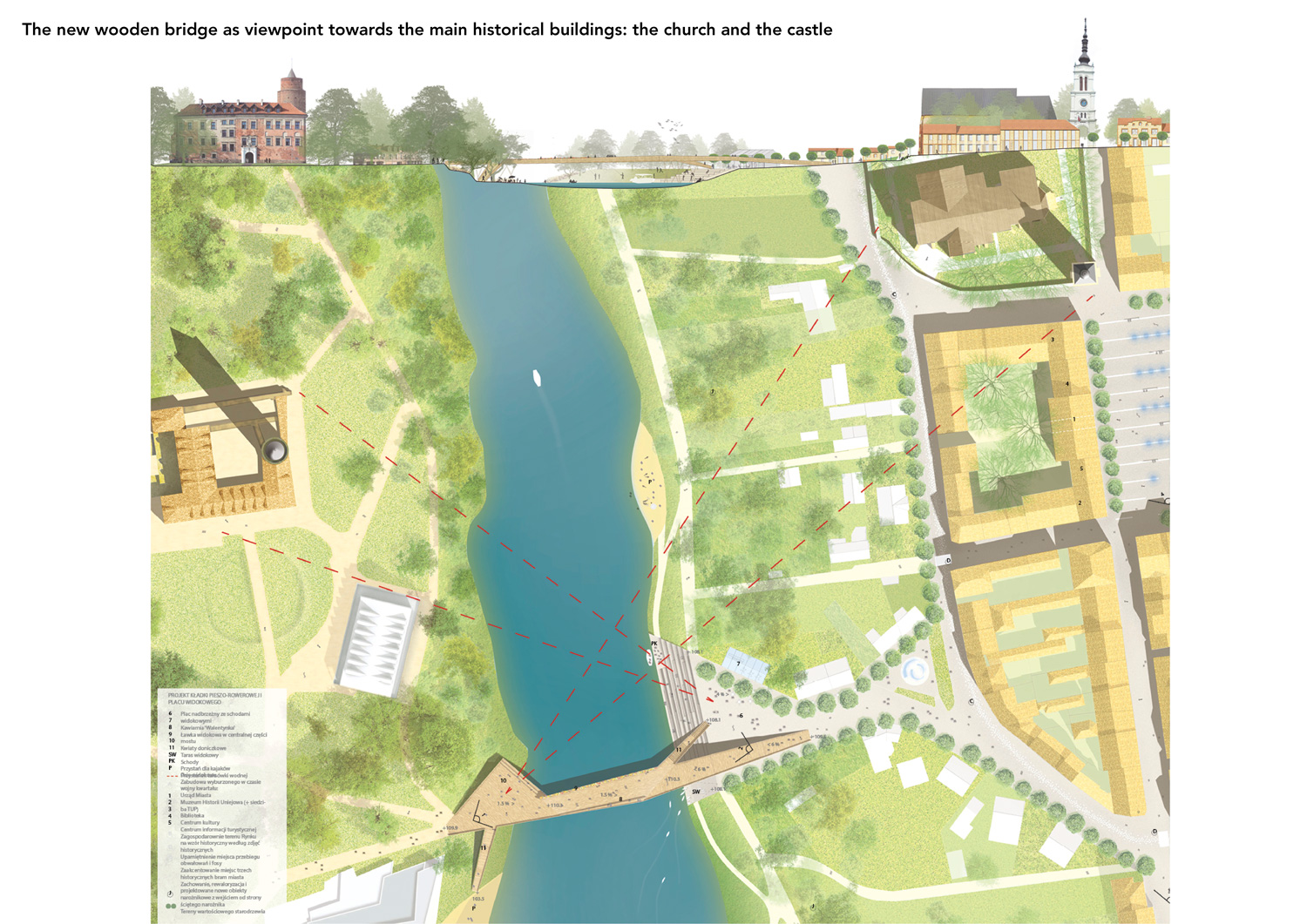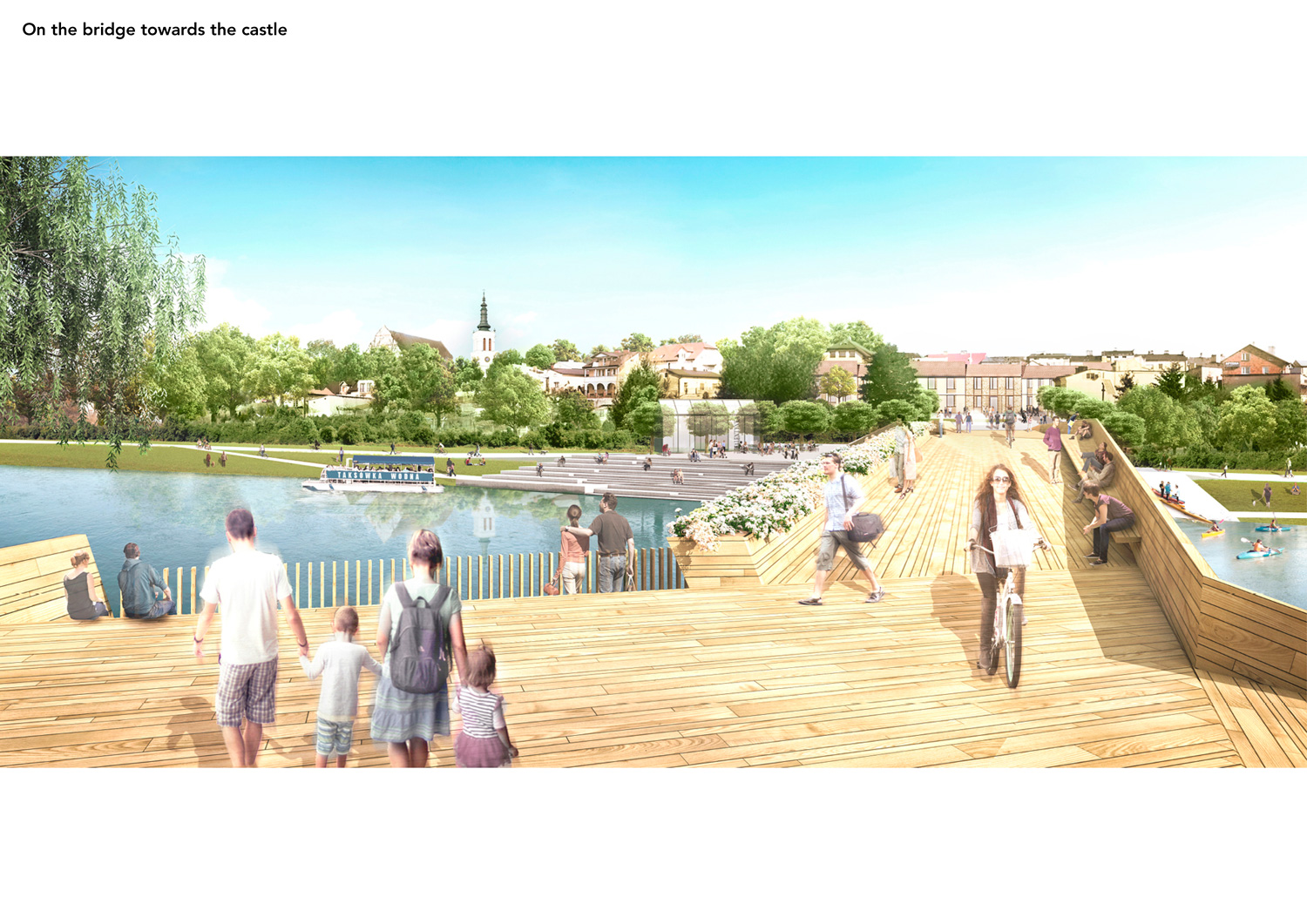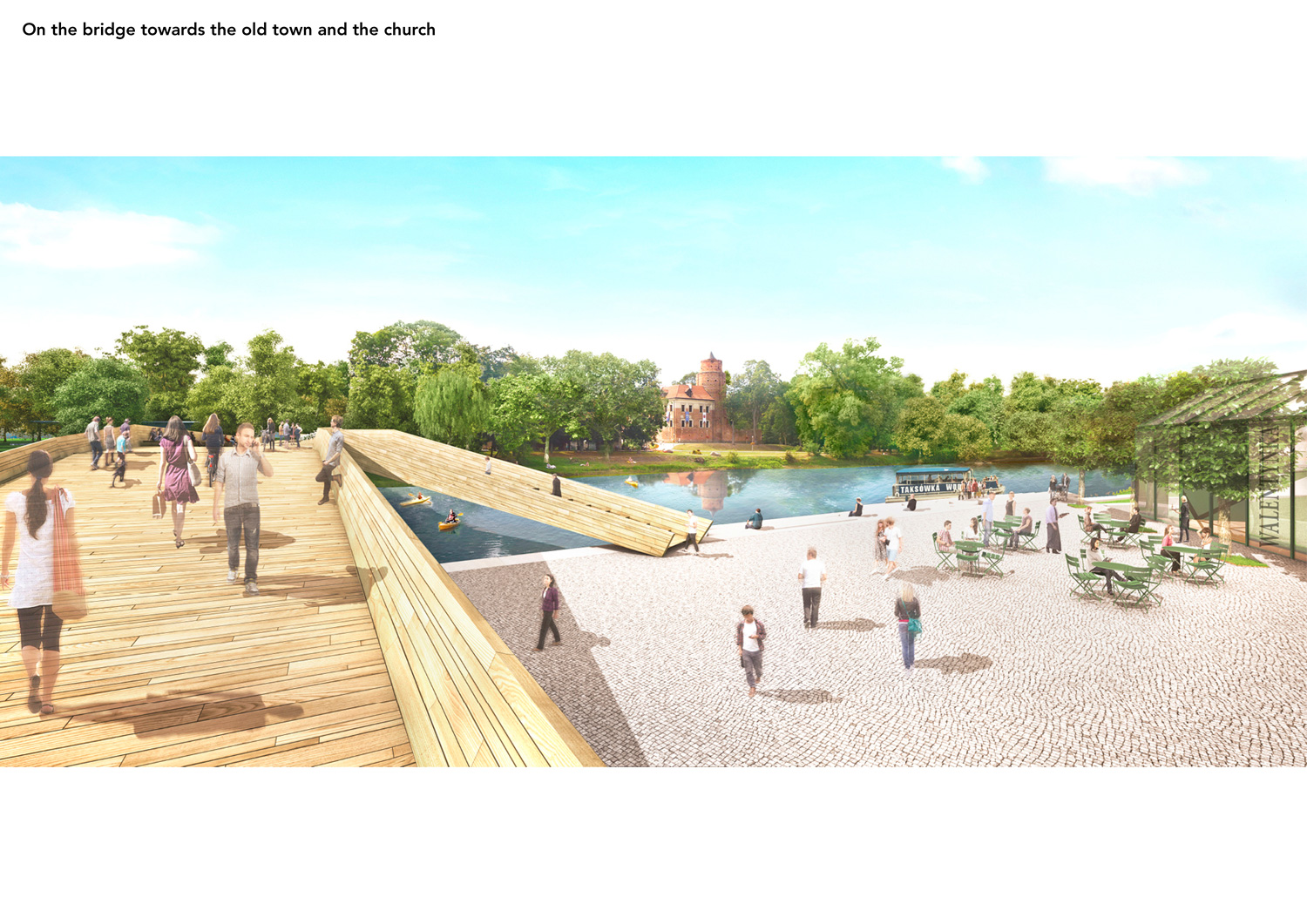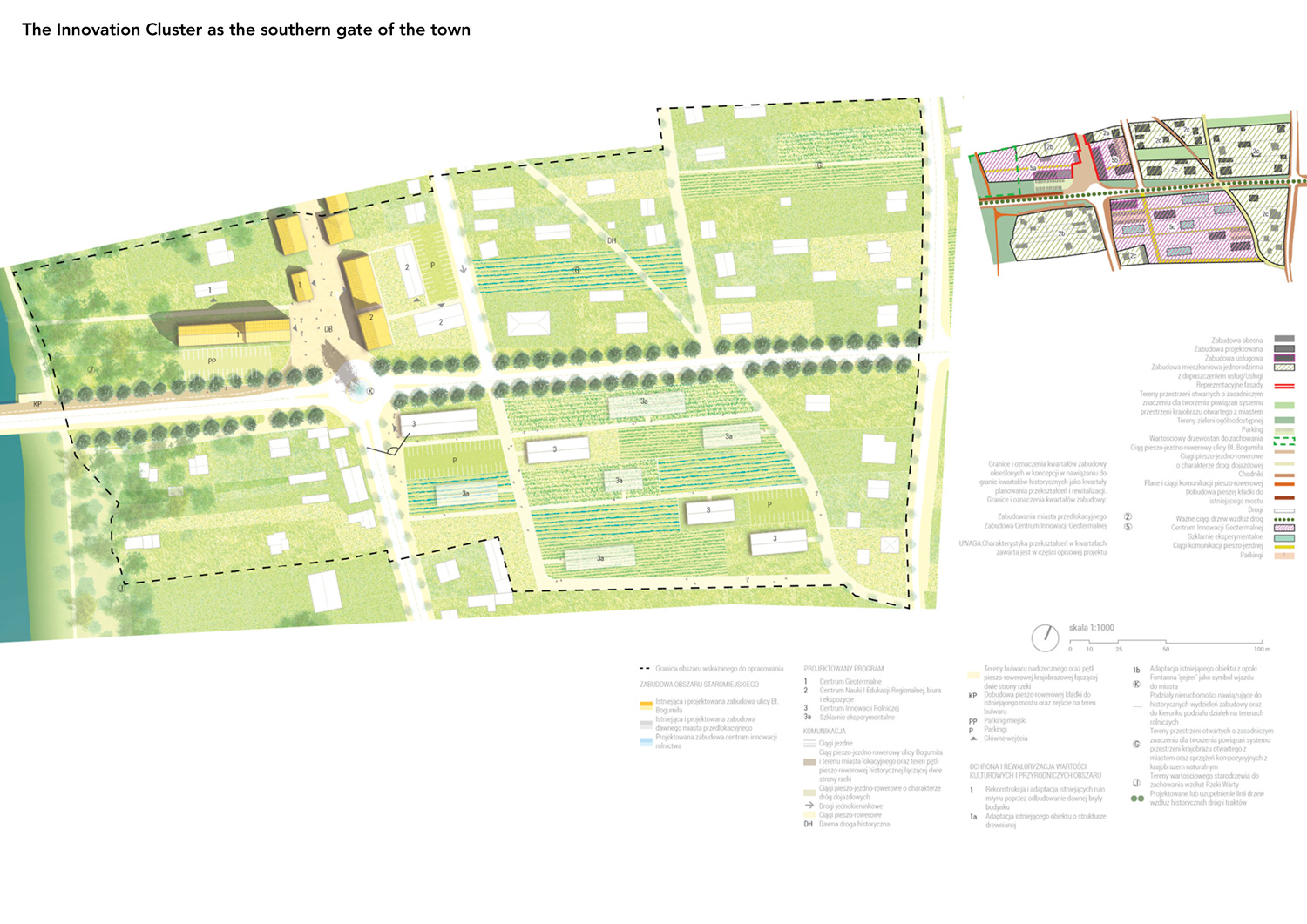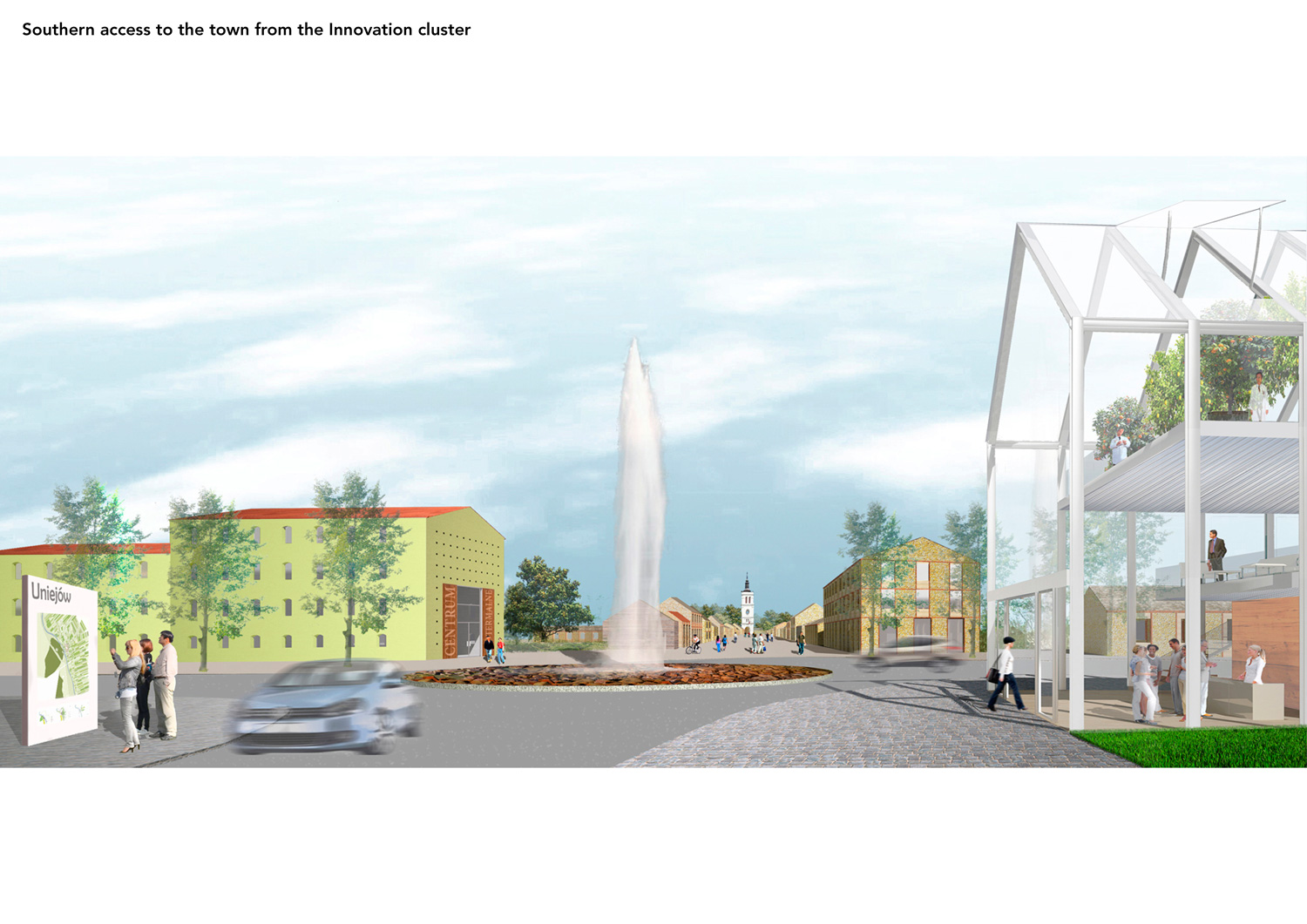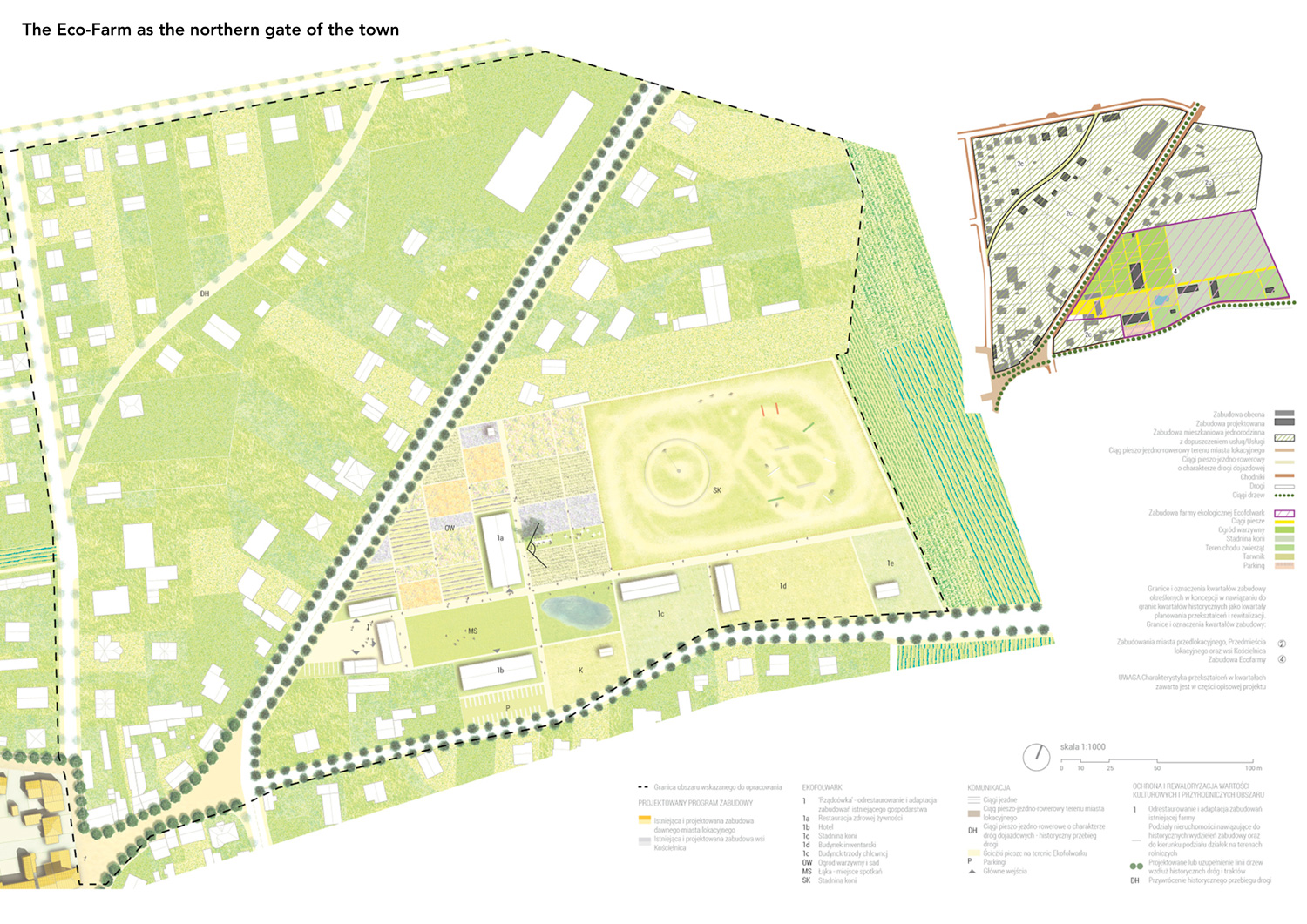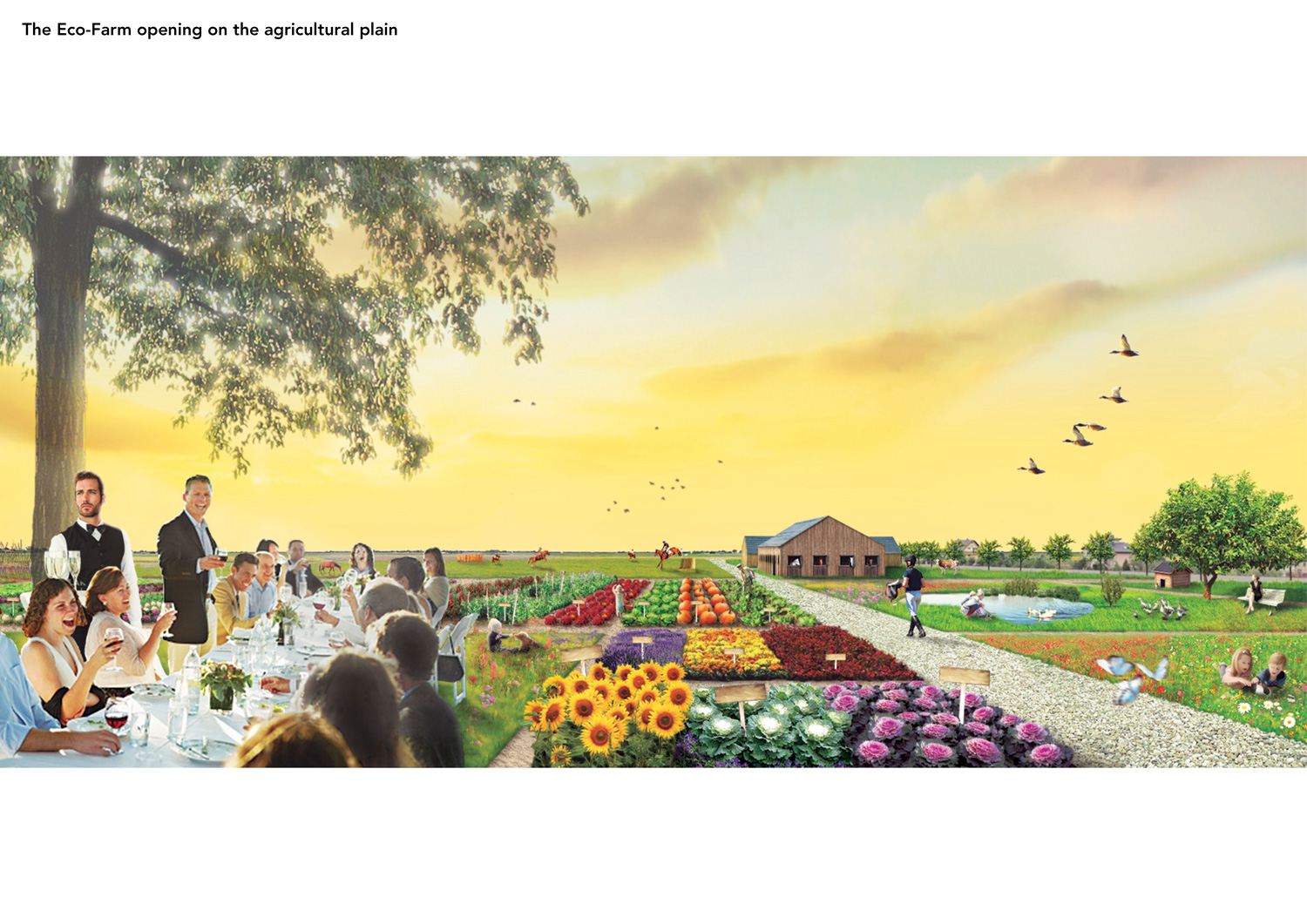☉ Uniejow town revitalization is a proposal by Eduard Balcells Honorata Grzesikowska Balbina Mateo Mercedes Doz Inma Subías and Luis Torres developed in 2014. It is located in Uniejów Poland in an old town and riverside setting. Its scale is extralarge.
Blue
Water runs through the history of Uniejow. In its origins the town settled at the most fertile bank of the Warta river, safe from floods. We believe that water will still run in the town’s future. The town center will open back to the river with a new river promenade, and a wooden pedestrian bridge will provide a link with the old castle, the spa and the new developments at the left bank. At the eastern side of this bridge, a small square steps down to the river, providing a contact point between the old town and the water and giving a clear access to the river promenade. The bridge is also a viewpoint towards the two medieval landmarks of the town: the church and the castle.
The recently discovered thermal waters are used in the successful spa complex, bringing about a new economical impulse. Expanding on the economic potential of the thermal waters, we can even imagine a “Uniejow brand” that would integrate health, medicinal and beauty products manufactured on site. Additionally, the thermal waters can be used to produce eco-friendly electricity.
Green
The river nurtures a richness of landscapes: agriculture, forestry, pastures and tree lined paths. Together they form a green structure that organizes the land. We propose to strengthen this green structure: additional trees are planted along the paths that cross the town, so that a green connection is established between the river and the agricultural fields.
Binding the parts of the town at both sides of the river, a new “landscape loop” will use existing paths to provide a soft itinerary for the discovery of the landscape.
Moreover, the river waters can irrigate a new ecological agriculture and foster contemporary forms of economy in close relation with the landscape. In this sense, at the north-east gate of the town, we propose an Eco-Farm that opens to the agricultural landscape and that incorporates a restored old farm as its entrance. In the Eco-farm, a restaurant, a hotel, and farm animals, including horses, welcome a public interested in healthy products which are grown on site: from the orchard to the table.
Yellow
The oldest buildings of the town are made of the local yellow limestone. The medieval town can be seen as a yellow rock that crystallized in the middle of the green. From then on, many superimposed historical layers and not fully realized ambitions have blurred the structure of the town. We propose to reveal this palimpsest and to use it to lend a clear structure to the town. For this purpose, the medieval center and the main street leading to it (Bogumilla) recover their original density and marked urban character, becoming the heart of the town. The renewed public spaces contribute to the reading of the town’s historical layers, along with a “history loop” that will provide a pedagogical itinerary through the town’s past, present and future, while, at the same time, linking more closely the parts of the town at both sides of the river.
At one tip of the main street (Bogumilla), we find the remodeled town’s square and the bell tower. At the opposite tip, we propose an Innovation Cluster, where new economical potentials for the town will be researched and developed. The Innovation Cluster marks the new gate to the town, with the restored mill, the greenhouse buildings, and a geyser fountain as height counterpoint to the bell tower.
Between this clearly urban core and the open agricultural landscape there is a transition area where the different town extensions are located. Here, we propose that the new in-fills and town extensions are places where urbanity and agriculture are weaved together into self-sustainable communities that strive to be in balance with the landscape.
